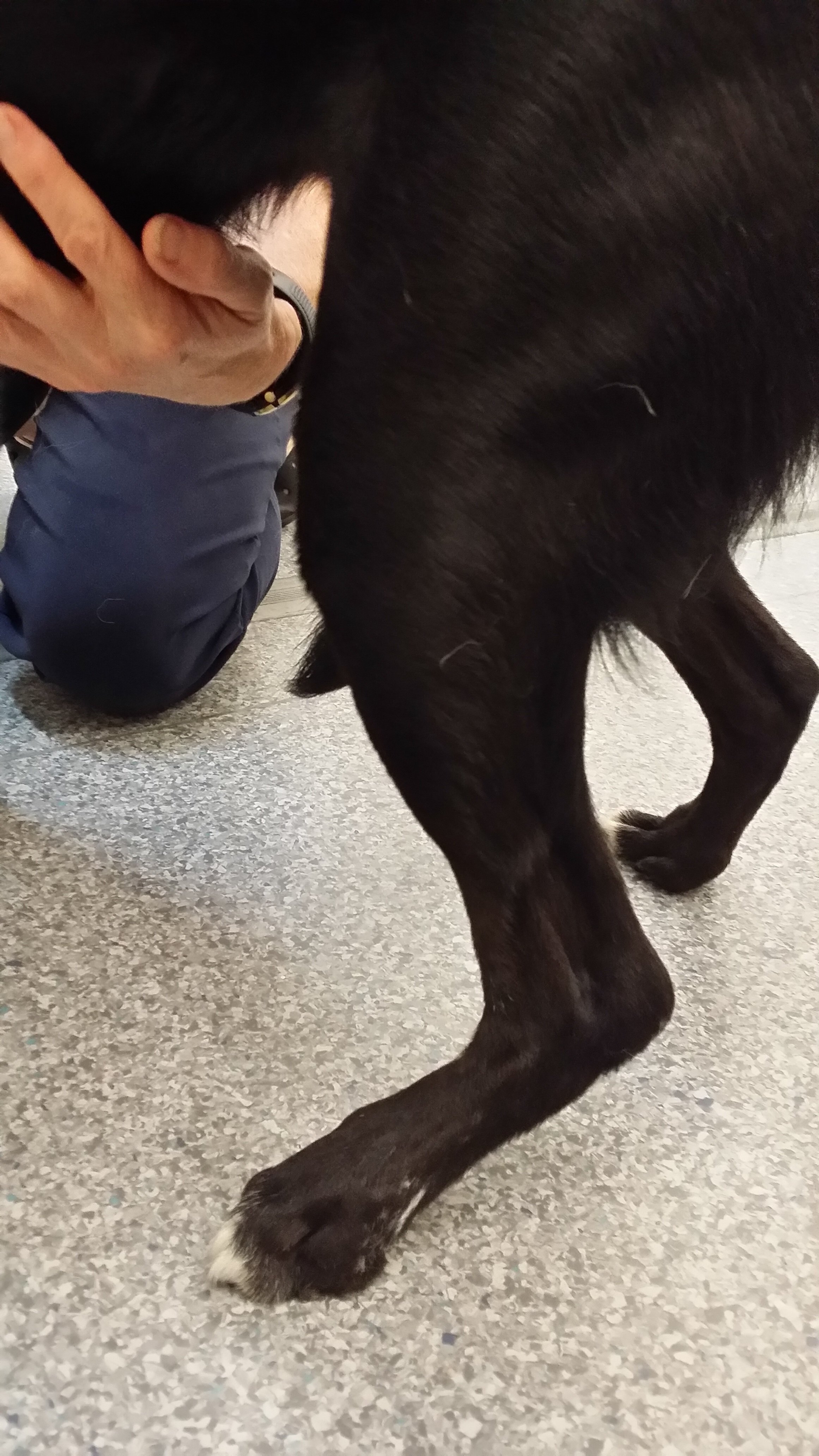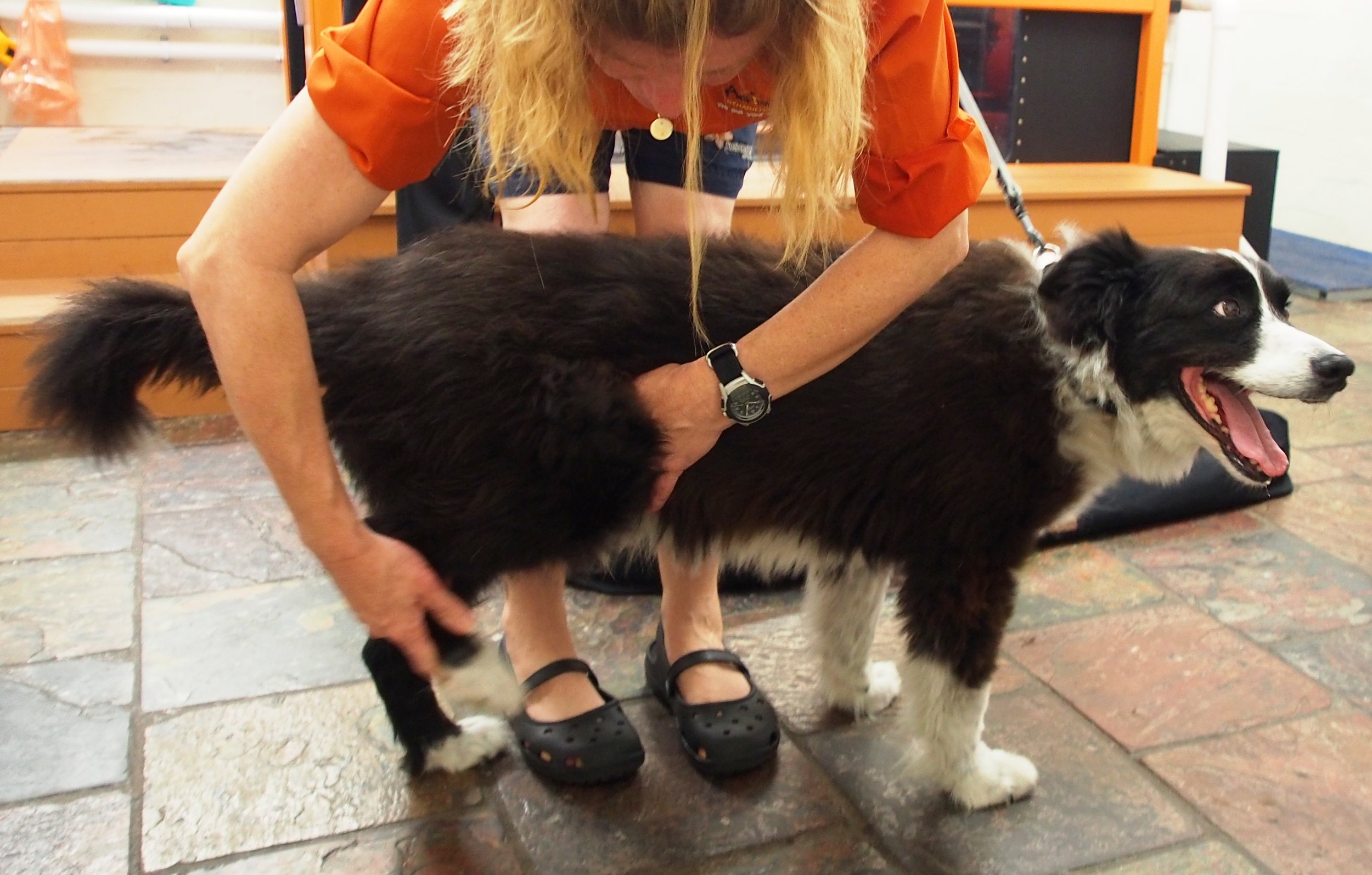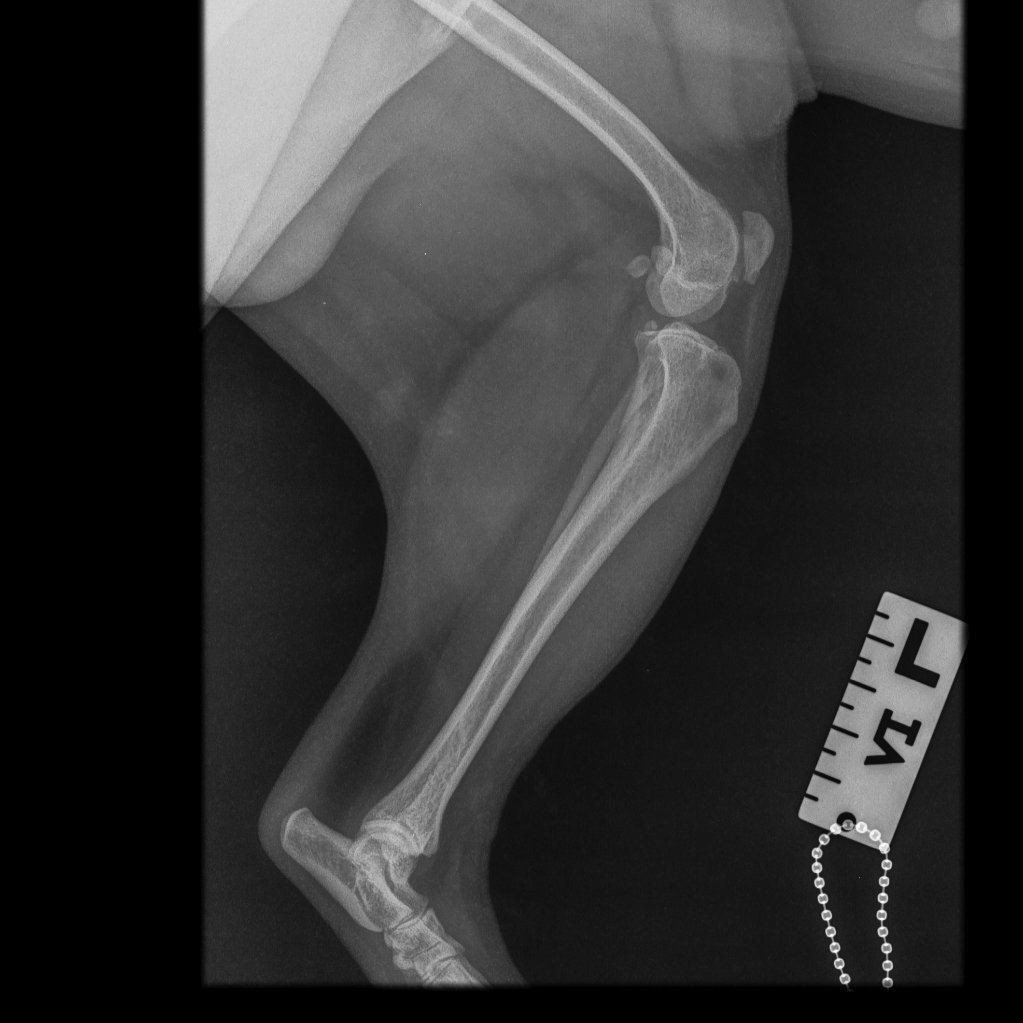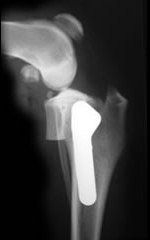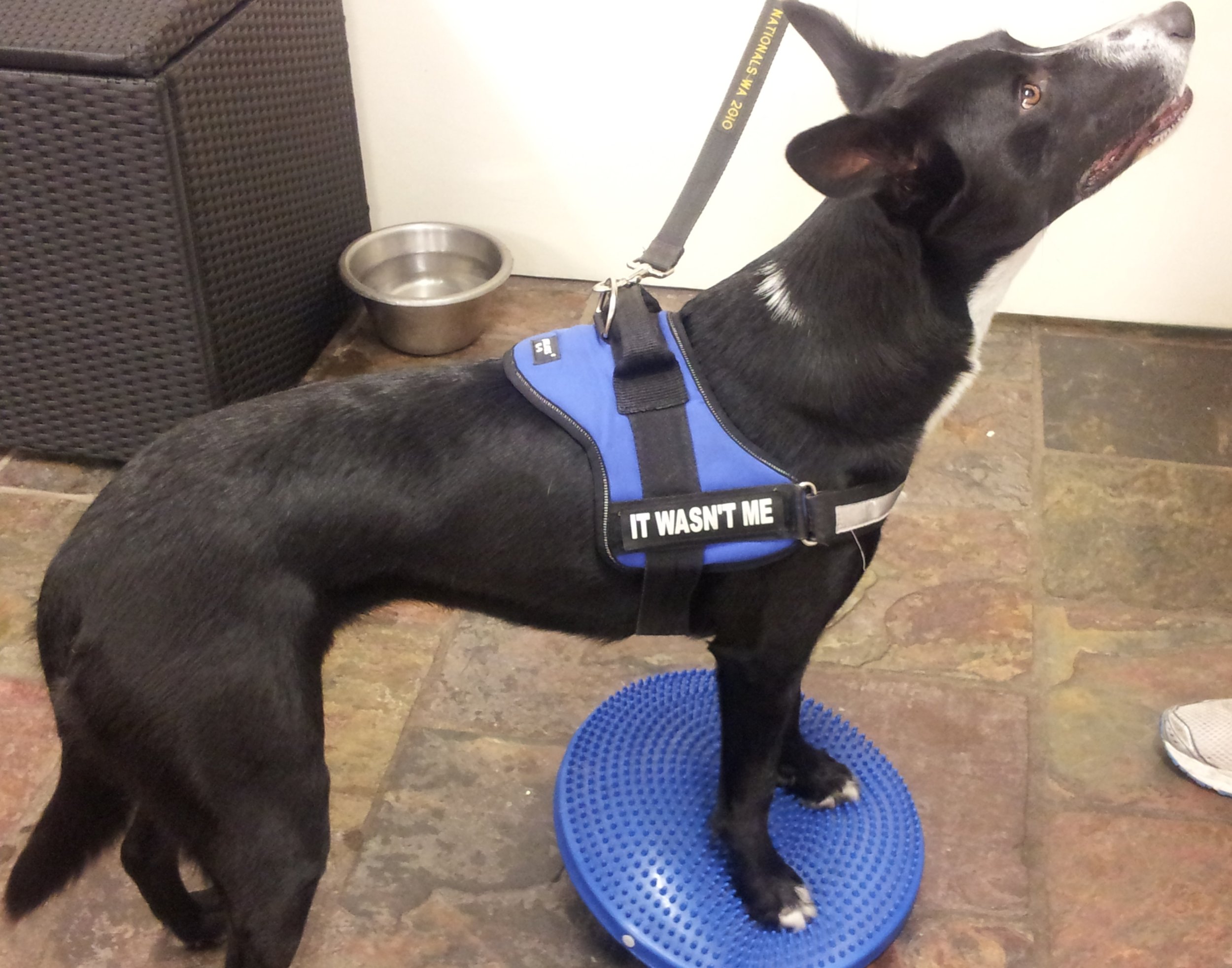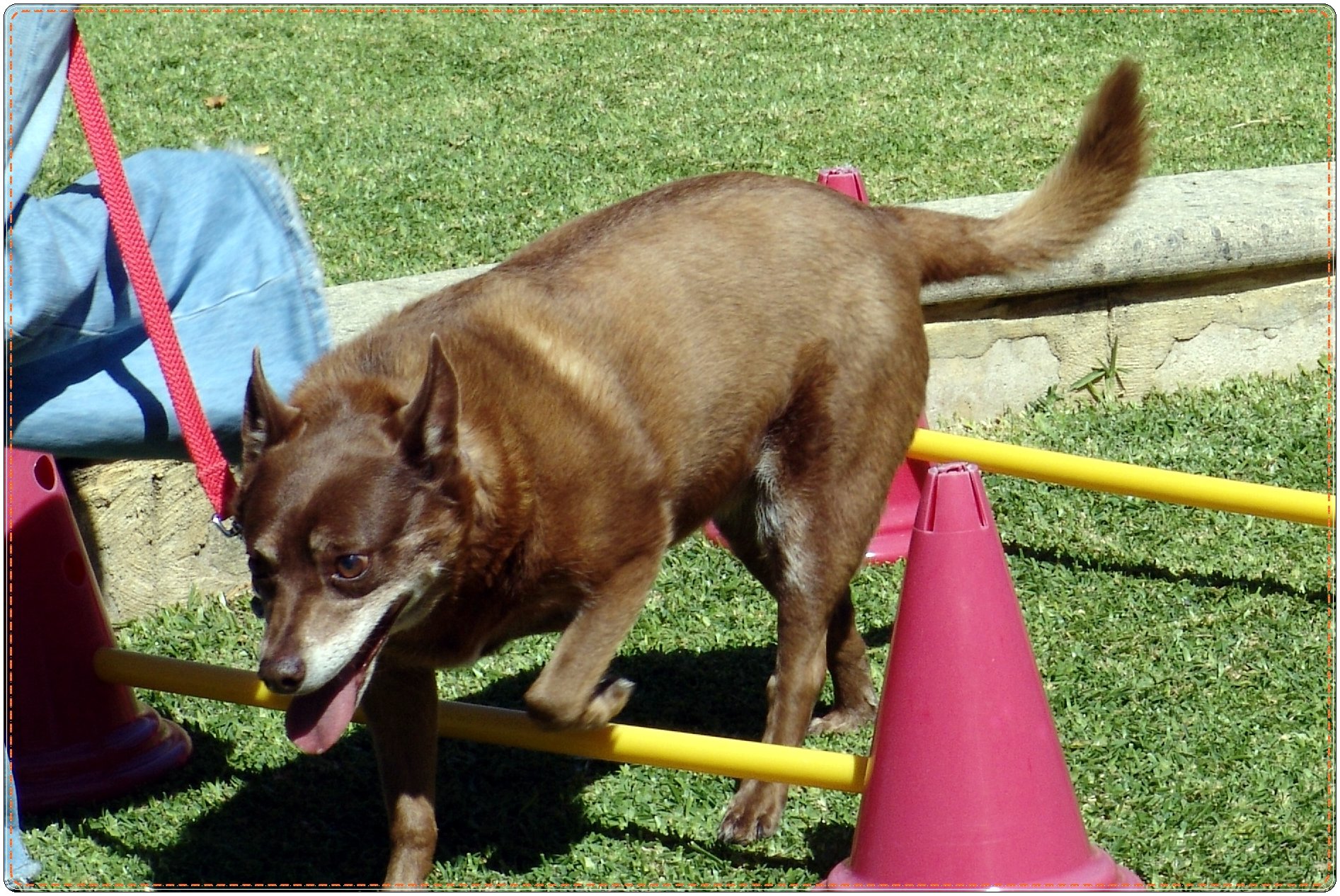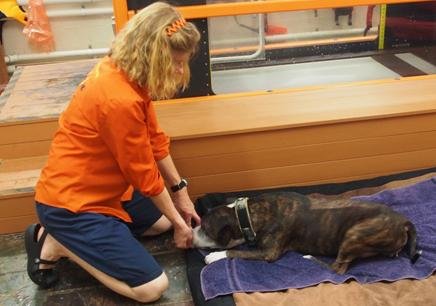Whether dealing with an acute injury in a young dog, post-surgery rehabilitation, or the resulting arthritis years later, cruciate injury is the number one orthopaedic condition we treat at Active Pet Rehabilitation.
With the hotter weather keeping more of us indoors and exercising less this summer, we are seeing more patients with this common injury, and more worried pet parents are asking us
Does my dog need to have surgery?
Whether our pets have been indoors for the winter or hiding from the heat during summer, whenever we bring our dogs out of sedentary semi-retirement, some of them are at the point where a 3-month "off-season" is like us taking 18 months away from our favourite activity.
So whether its a trip to the shifting sands of the beach or the first cool day out to the park with the family and the ball or the Frisbee...
Don't forget Summer to Summer is a whole 7 years for a dog, and how many of us are as fit now as we were 7 years ago?
Often our de-conditioned dogs do not fare as well as they have in the past. If they do not suffer an instantly recognizable acute injury, they will often be stiff on rising or lame that night, or the following day.
Sometimes they improve, until a few weeks or months later when they over-exercise again.
So now you are faced with the vet talking about a possible cruciate injury.
What has your vet recommended? If your fur baby is not hopping lame, a couple of weeks with anti-inflammatories and strict rest?
If the lameness keeps happening you start to wonder:
Does my pet need to have surgery?
For financial, medical, or emotional reasons pet parents are often keen to avoid surgery.
Before we get into a surgical vs. non-surgical debate it is always crucial to determine if it is cruciate disease causing the lameness, or if there are other disease processes causing hind limb pain and/or affecting normal healing as well. Your vet will be able to perform a number of diagnostic tests to confirm if there is a cruciate injury and any other problems.
Surgery may not be an option if:
other medical conditions limiting healing are present
your dog is overweight or has other acute traumatic injuries which take priority over cruciate surgery.
you are unable to cope with post-surgical management such as exercise restriction, separation from other pets, or progressive rehab exercises and no other care options are available.
It is worth noting that neither surgery nor rehabilitation cures cruciate disease, they only alleviate the symptoms - permanently we hope.
“treatment of cruciate ligament rupture is a lifelong endeavor.” (1)
When we consider this we hope that good exercise management will mean pets can avoid cruciate injury altogether.
A recent study by Washington State University into the likelihood of cruciate injury in Agility dogs concluded that dogs that performed core strengthening exercises as part of their training had a reduced risk of suffering from this type of injury. (2)
When we speak about non-surgical management of a cruciate injury we need to stress:
If there is no improvement in your dog within 8 weeks using controlled rehab exercises and conservative management, surgery should be considered as the best option for your pet.
Arthritis will always occur, with surgery or without. The more laxity and movement in the joint the more arthritis (and often more pain) there will be.
If you want to avoid surgery then you must follow strict exercise controls including no running, jumping, or rough-house play with other dogs or family members during the rehabilitation period.
Below are some early rehabilitation exercises to get your fur baby off to the best start following cruciate injury or surgery
-
Does Conservative Management of Cruciate Ligament Injury Shorten Lifespan?
www.mylamedog.com -
Debra C. Sellon, Denis J. Marcellin-Little. Risk factors for cranial cruciate ligament rupture in dogs participating in canine agility. BMC Veterinary Research, 2022; 18 (1) DOI: 10.1186/s12917-022-03146-2
